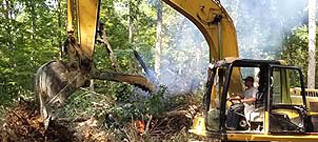By The Aviation Training Systems Program Office & Rob Koon, NAVAIR Public Affairs
Navy virtual training took a huge step forward during a recent exercise by linking four Hornet simulators on the West Coast to the Second Fleet staff on the East Coast.
For the first time ever, Second Fleet linked manned Hornet Distributed Mission Trainers (DMTs) from Strike Fighter Wing Pacific (SFWP) at Naval Air Station Lemoore, Calif., to the rest of the training audience in the Norfolk, Va. The participation of the Hornet simulators brought increased realism to what is primarily a staff-training event where computers simulate how a Carrier Air Wing would react in different scenarios.
"The ability to be fully immersed in a combat scenario, with targets, far exceeded the administration drills we did on my previous workups," said Lt. Cmdr. Chris Schmidt, an instructor pilot with Strike Fighter Squadron (VFA)-122. “Flying the simulator feels more like the real thing once you start to intercept and visually identify the enemy aircraft.”
In this event, Fleet Synthetic Training – Joint (FST-J) O6-1, actual Hornet pilots responded to staff taskings, were controlled by the Hawkeye Deployable Readiness Trainer (EDRT), and were seen by up to eight participating ships that were connected to the network while they were tied up pier side.
“The success of this first effort has generated a lot of interest in the future of virtual trainers as a cost effective means of achieving readiness. Navy leadership will gather in the near future to define what role aviation simulators will play in transforming the way we train,” said Capt. Randy Black, Program Manager, Aviation Training Systems.
“Adding the human element to the problem increased the realism for all involved because the Strike Group Commander and his staff have to transmit guidance and direction to the pilots just as they will have to when at sea. Getting down to this level has the potential to identify planning shortfalls before they occur at sea, “ said Lt. Cmdr. Chris Provan, NAVAIR Orlando, Training System Manager.
He added, “In this exercise, the Hornet pilots had to plan how they would defend the fleet from attacking “enemy” aircraft while they operated in a high threat environment and still comply with the exercise rules of engagement.”
The technical challenges in preparing for and executing this exercise were significant. The DMT suite of four simulators had not been delivered yet when they were initially tasked to participate in this exercise. Two Integrated Project Teams under the Aviation Training Systems program office (PMA205) successfully delivered and installed the simulators, had them tested and accepted for use by the Fleet.
The simulators were then connected to the wide area network used for this exercise and, potentially, for future Navy virtual exercises. The Navy Aviation Simulation Master Plan (NASMP) Integrated Project Team, led by Brian Hicks of PMA205, had the task of ensuring that the new simulators and the upgrades of other current Fleet simulators were capable of being linked together in both local and wide area networks.
While the Hawkeye trainer, the Aries II Mission Avionics System Trainer (MAST) and the Seahawk Mission Rehearsal Tactical Team Trainer (MRT3) are desktop type simulators that have participated in previous virtual exercises; the Hornet simulators are the first high fidelity Naval aviation simulators to be fully integrated into an exercise of this kind.
“The key to ensuring that this capability provides truly transformational training is that all participants in large-scale exercise must receive valuable training. In the past, large Navy and Joint staffs received training by bringing in role players as training aids,” said Cmdr. Dan Redgate PMA 205 Synthetic Training Lead.
The simulators allowed the pilots to brief their missions and fly them in a formation within sight of each other, and then employ the weapon system tactically just as they would in the real world. Cockpit switchology, sensors, and even self-protection chaff and flares were modeled to perform against virtual adversaries mirroring real threats.
“The ability to network the Air Wing pilots in high fidelity simulators with Strike Group staffs provides a realism and training value that has the potential to approach that previously gained only by going to sea and flying. Virtual training won’t replace steaming days and flight time completely, but it has the potential to hone war-fighting skills, while saving money and reducing stress on the Fleet,” stated Brian Hicks, PMA205 Navy Aviation Simulation Master Plan Lead.
The Aviation Training Systems program office is already planning for the next virtual event where the participating Carrier Air Wing will man the Hawkeye trainer, the Hornet simulators and exercise real world contingency plans to identify and attack time sensitive targets in a realistic Global War on Terror scenario.
PHOTO: A Navy Hornet pilot from Strike Fighter Wing Pacific watches his virtual wingman from the cockpit of a Hornet simulator.


